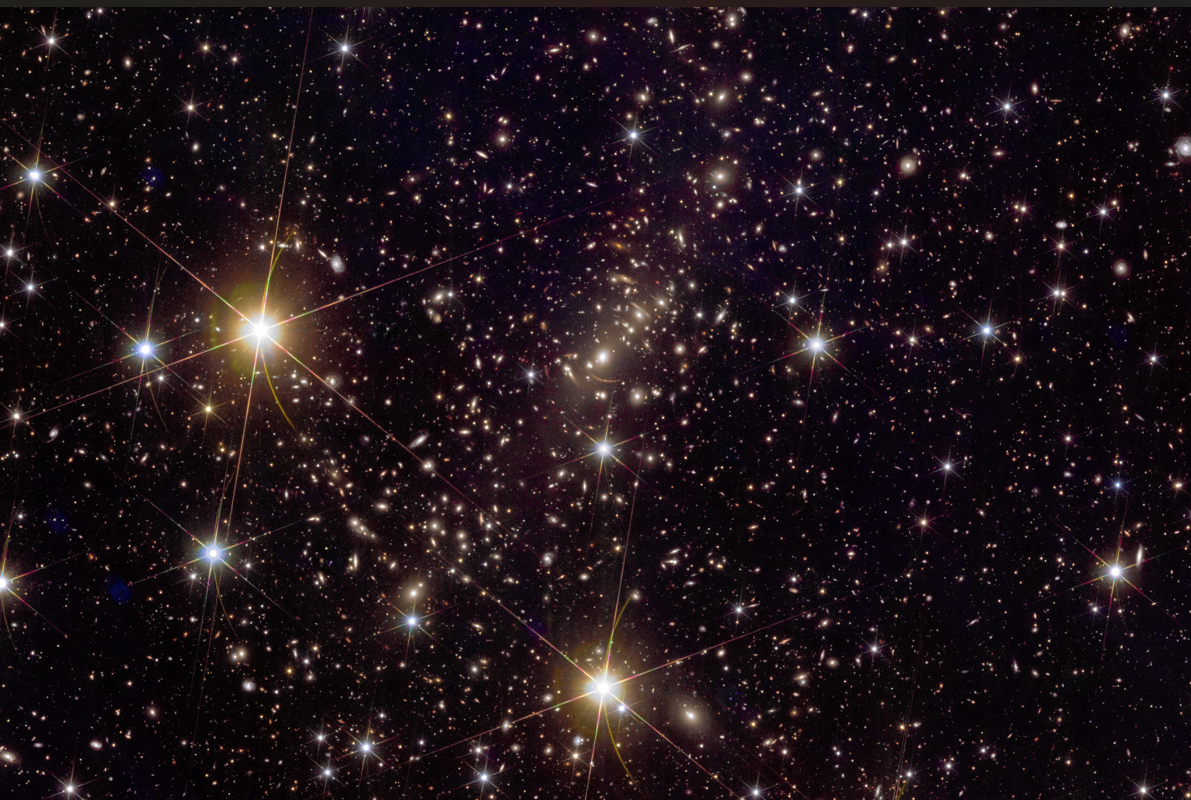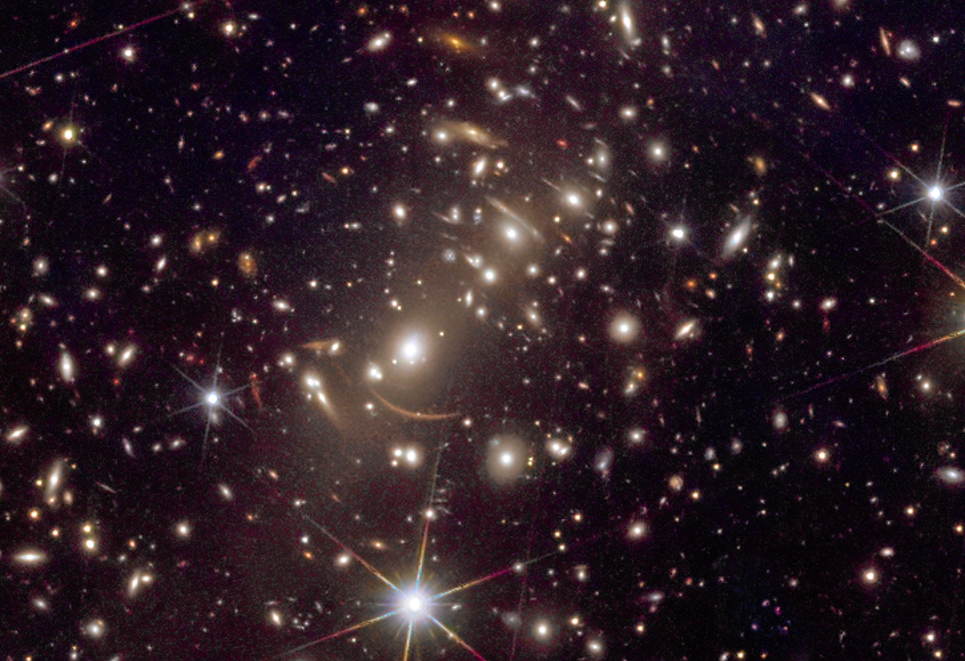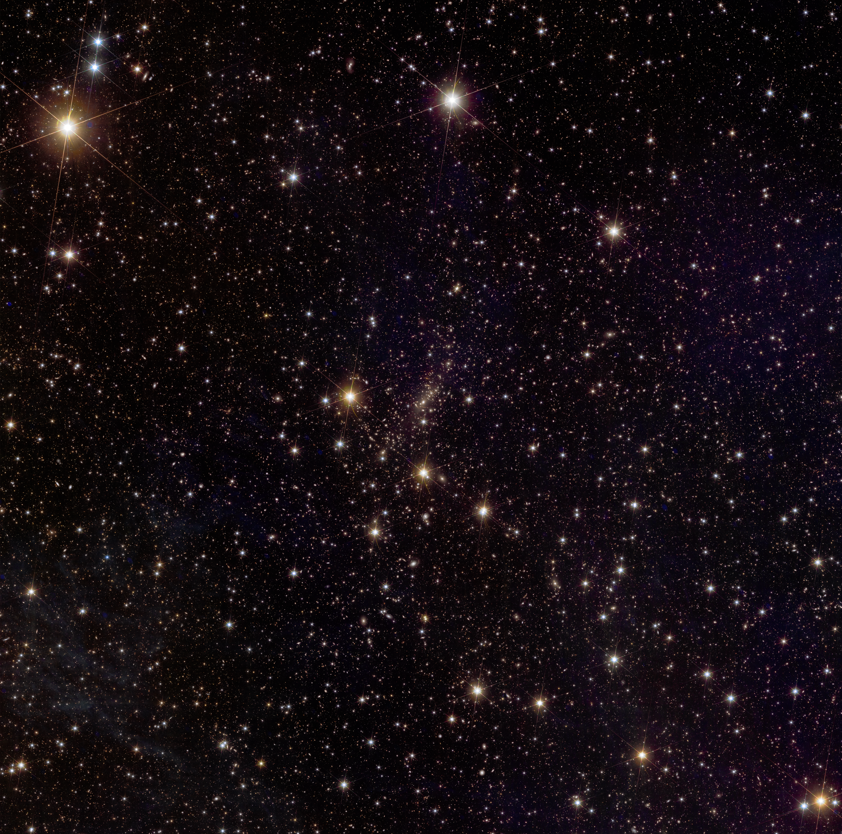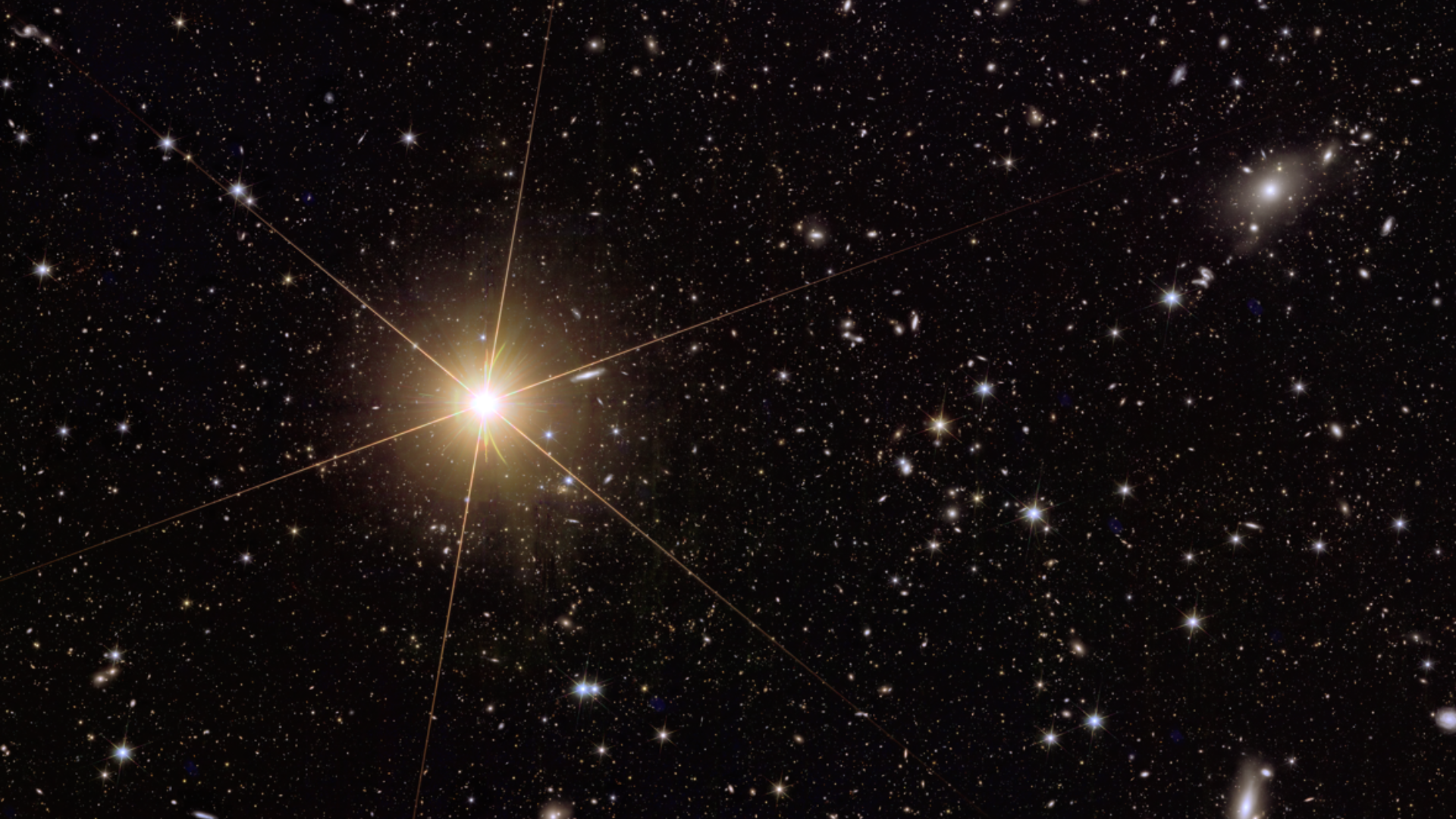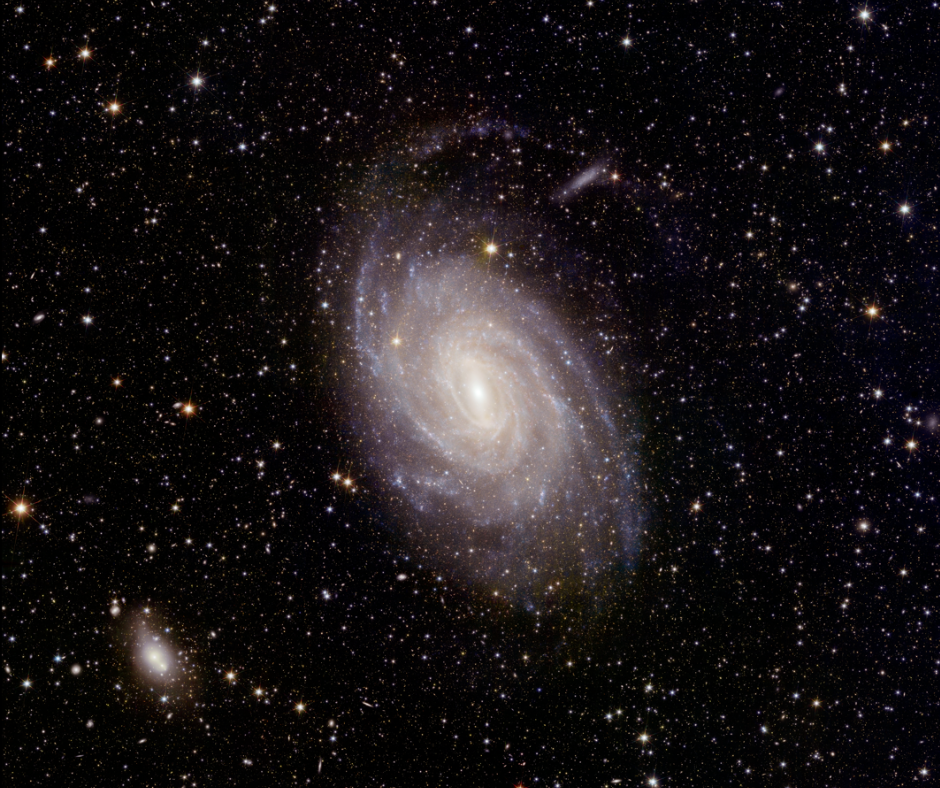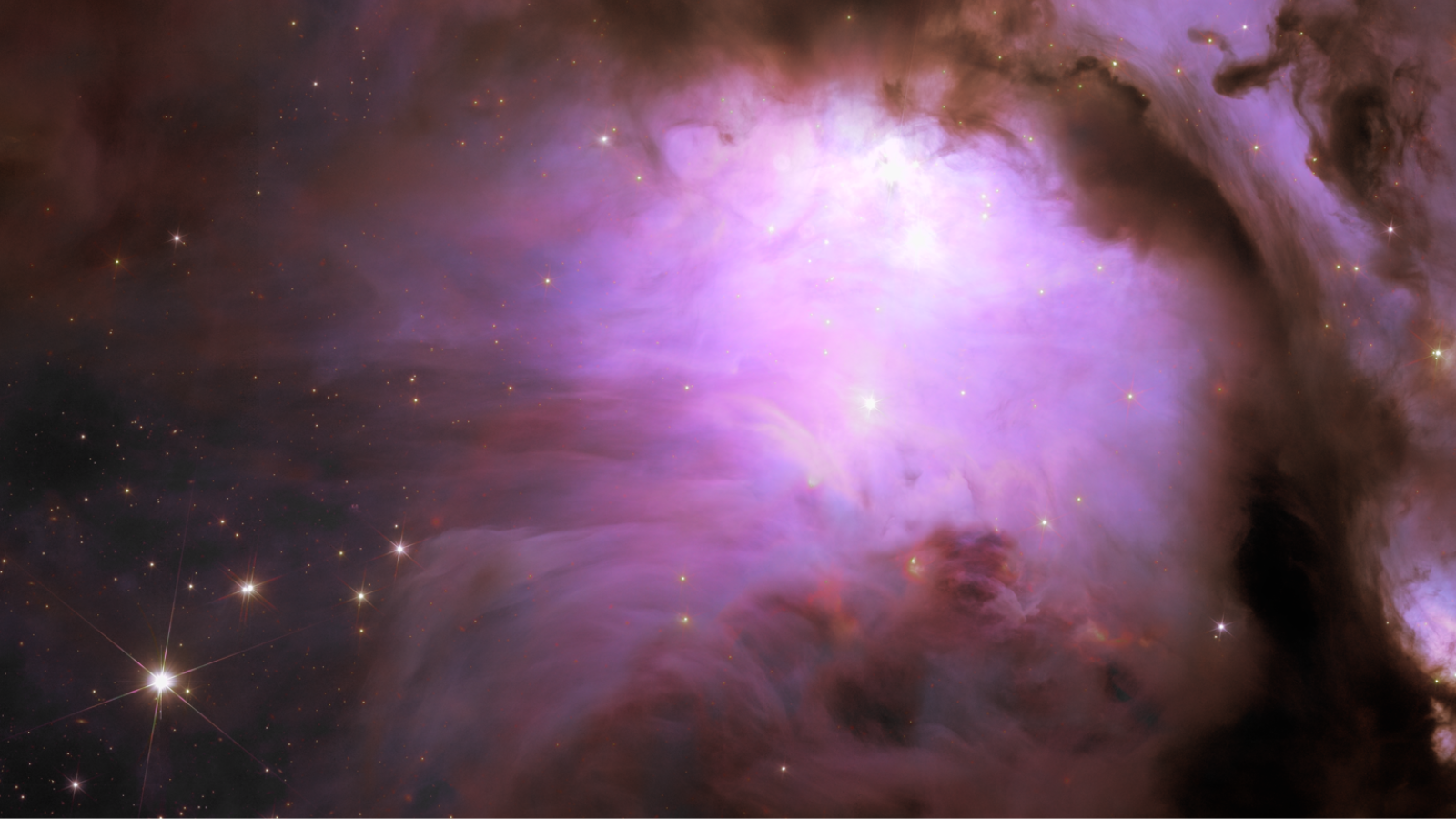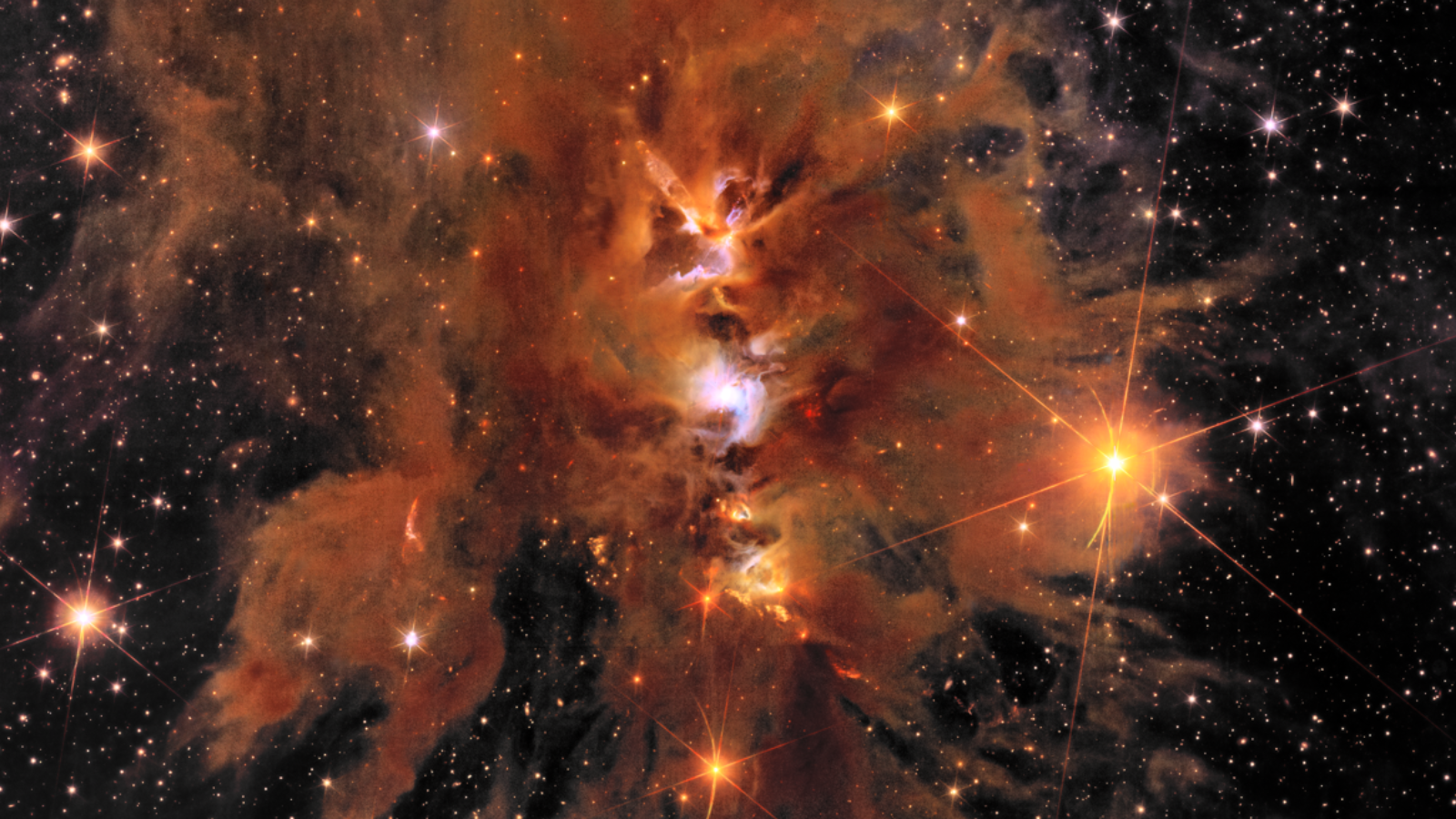The Euclid 'dark universe detective' telescope has revealed new images of the cosmos — and they are remarkable
"It's absolutely amazing. It's just so much more than I ever expected. Euclid will be game-changing for astronomy."
The Euclid space telescope has released five new views of the cosmos that show an array of celestial objects in unprecedented detail.
Euclid has been dubbed a "dark universe" detective because its primary mission is to investigate the universe's two most mysterious elements: dark energy and dark matter, often collectively described as the "dark universe."
Dark energy is the placeholder name given to whatever force is causing the expansion of the universe to accelerate, while dark matter is a form of matter that is effectively invisible because it doesn't interact with light. This means scientists know it can't be "ordinary" matter made of electrons, protons and neutrons that comprise stars, planets, moons, our bodies, and pretty much everything else tangible we can indeed see and interact with.
Related: Euclid 'dark universe' telescope captures 1st full-color views of the cosmos (images)
The background
The Euclid space telescope launched from Cape Canaveral in Florida atop a SpaceX Falcon 9 rocket on July 1, 2023, and it has since sent back a few incredible images — but, as time passes, its portraits are likely to ramp up in frequency.
This unseeable dark universe is a big problem for scientists because dark energy is thought to make up around 68% of the universe's energy and matter budget, while dark matter comprises about 27% of it. Thus, 95% of the universe's matter and energy is in the dark domain; stuff scientists actually understand accounts for just about 5% of the cosmic matter/energy budget.
Euclid, however, is expected to be able to probe some of these dark universe intricacies. These new images are part of the telescope's Early Release Observations and show that not only is Euclid up to that task, but it may very well be able to perform beyond scientists' original expectations.
Breaking space news, the latest updates on rocket launches, skywatching events and more!
The Euclid space telescope launched from Cape Canaveral in Florida atop a SpaceX Falcon 9 rocket on July 1, 2023, and it has since sent back a few incredible images — but, as time passes, its portraits are likely to ramp up in frequency.
The five new images released by the Euclid team are at least four times sharper than images taken from ground-based telescopes. Covering vast swathes of the sky, they feature unrivaled depth as well, with Euclid peering far into the distant universe using its 600-megapixel camera that observes celestial targets in visible light and a near-infrared spectrometer.
"Euclid shows star-forming regions in unprecedented detail, uncovering 300,000 new objects in one shot, including free-floating planets that are four times the mass of Jupiter," European Space Agency (ESA) Director General Josef Aschbacher said in a broadcast from the agency's Space Astronomy Center (ESAC) in Madrid. "During its mission, it will help us to better understand our universe, what it is made of, and how it has expanded and evolved over cosmic history."
ESAC head and astronomer Carole Mundell added: "The Euclid mission is our dark detective, and this is an incredible mission that we launched last year that wants to answer the big question 'what is the 95% of the universe that we don't understand?'"
So, without further ado…
The images
For 16 years, University College London researcher Mark Cropper led the team developing Euclid's optical instrument, and I had the pleasure of witnessing his viewing these new images for the very first time.
"It's absolutely amazing. I've worked with Euclid for a long time, around a third of my career, and we had detailed simulations of what to expect. But, I have to say, these new images are just so much more than I ever expected," he told Space.com. "These are the largest images of the universe ever taken from space, covering large swathes of the sky in fine detail.
"They demonstrate Euclid’s wide-ranging potential, from discovering new planets to surveying vast clusters of galaxies."
Abell 2390
One of the images that impressed Cropper features Abell 2390, a giant conglomeration of galaxies that are similar to the Milky Way and located around 2.7 billion light-years from Earth in the constellation of Pegasus.
The image features a staggering 50,000 galaxies in great detail, and shows "intracluster light" that comes from stars in Abell 2390. Those are stars that have been ripped from their homes due to violent gravitational interactions with other galaxies in the cluster. This intracluster light can help reveal the distribution of dark matter, too.
Of particular interest to scientists investigating dark matter will be the background arcs and distorted swirls in this image, which represent light from distant galaxies being gravitationally "lensed," or warped, by the effects of dark matter situated between the galaxies themselves and Euclid. This warping of distant galaxies can be seen below in a section of the Euclid image of Abell 2390.
"One of the things we see is these giant arcs here, these smooth arcs that are curved, those are actually very distant galaxies that have their shapes hugely distorted by the gravity of the dark matter in the cluster," Jason Rhodes, a scientist at NASA's Jet Propulsion Laboratories (JPL) said during the broadcast. "And some of these arcs are even multiple images of the same very distant galaxy."
What is especially useful in the hunt for dark matter are the tiny degrees of lensing or "microlensing" that can't be seen for individual galaxies but can be statistically calculated for a vast array of galaxies.
"The strongest way to measure dark energy and dark matter is not by using the big arcs of galaxies, but by using the tiny distortions of every single galaxy in Euclid's wide field of view," Cropper said. "You need to have 1.5 billion to 2 billion galaxies and average them together to work out whether there's a residual shape in that part of the sky, which the dark matter is causing the distortion.
"Euclid needs to see so much sky because these distortions are tiny."
Abell 2764
This new batch of images from Euclid also includes a view of another galaxy cluster, Abell 2764, located around 1 billion light-years from Earth in a dense region of space.
“In this beautiful picture of Euclid we see many interesting things. In particular, we see a massive galaxy cluster at the top right corner of the image. This cluster contains dozens of massive galaxies orbiting a dark matter halo," Hakim Atek from the Institut d'Astrophysique de Paris explained during the broadcast.
"Apart from this galaxy cluster," Atek continued, "we see an impressive density of sources in this image. This is what we call a blank field because it's more representative of the large scale distribution of galaxies in the universe. This patch of the sky corresponds to only one pointing of Euclid, and the mission will map 30,000 times this area."
As this close-up of Abell 2764 shows, pictured galaxy clusters also contain bright objects marked by distinctive artifacts in the data known as "diffraction spikes."
Other stars within the Milky Way that are much closer to Euclid, are also seen, and because of their relative proximity, they appear incredibly bright. This particular star is V*BP-Phoenicis — it's actually so bright in the night sky it can almost be seen with the unaided eye.
Cropper explains that this diffraction of near and bright sources is unavoidable because they result from light interacting with the structures holding and supporting optics in the telescope's instruments. However, this doesn't impact Euclid's precision.
"To achieve its core aim of better understanding dark energy and dark matter, Euclid's measurements need to be exquisitely precise. This requires a camera that is incredibly stable and incredibly well understood, with conditions inside it that need to be controlled very carefully," Cropper said. "The camera we developed will not only contribute beautiful images but help us answer fundamental questions about the role of dark energy and dark matter in the evolution of the universe."
When Euclid begins its main survey, the space telescope will scan around one-third of the sky to image thousands of galaxy clusters like Abell 2390 and Abell 2764, which can have masses equivalent to around 10 trillion suns. Euclid's wide view of these celestial bodies will capture the clusters in their entirety while still allowing them to be compared to background galaxies. This will provide scientists with vital information to constrain the properties of dark matter and dark energy.
Atek added that, from this picture, we can identify some of the rarest objects in the universe thanks to the wide field of view of Euclid.
"We identify some of the brightest and most massive galaxies in the early Universe," Atek continued. "Thanks to that we can also study how these objects, along with supermassive black holes, helped shape the entire universe at early times."
This telescope will also allow scientists to witness some of the most distant galaxies that existed during the early cosmic dark ages, which occurred around just 700 million years after the Big Bang when the universe was approximately 5% of its current age. Such information could help researchers determine how the first galaxies were formed.
The Dorado Group
Another conglomeration of galaxies imaged by Euclid for this new data release is the Dorado group, located around 62 million light-years away. It's one of the richest galaxy groups visible over the southern hemisphere.
"A galaxy group is typically a lot of galaxies, but it's a little smaller than a large galaxy cluster,” Karina Voggel of Strasbourg Observatory said. "Here, we can see its two main members in the very center. These are two big, older elliptical galaxies, and what we see is they are interacting.
"So we see galaxy evolution as it's happening. This showcases beautifully this type of galaxy evolution."
In this image of the Dorado group, Euclid captured an ongoing collision between two galaxies. This interaction is dragging out long tidal tails packed with stars and gas that can be seen in detail. Dorado is a fascinating object of study for Euclid as it is younger than other galaxy clusters. This means several of the galaxies that comprise Dorado are still in the process of forming stars. Other Dorado galaxies show signs of recent mergers, and some, like the two vividly captured in this image, are still in the process of colliding.
This means the investigation of this grouping with Euclid offers scientists a way to understand how galaxies evolve within vast halos of dark matter. The image of Dorado also demonstrates Euclid's versatility in imaging different types of galactic groupings.
NGC 6744
That versatility is on show in a newly released image of galaxy NGC 6744 as well. At 30 million light-years away, this "twin" of our Milky Way is one of the largest spiral galaxies in our general cosmic vicinity.
The wide-field view of Euclid allowed it to capture the entirety of NGC 6744, demonstrating its capability to facilitate the study of entire galaxies. But, as the image below also shows, that doesn't mean the space telescope will miss the fine details of these galaxies.
The zoomed-in image above shows a disruption in one of NGC 6744's spiral arms; it also reveals wispy spurs in the galaxy's other features of gas, dust, and stars.
Spiral arms are important to the formation of stars because these structures churn and condense gas and dust, triggering star formation along their length. The feathery spurs seen in these images are only created when the spiraling of galaxies is intense. Thus, this image provides hints as to why spiral galaxies look the way they do.
The precision of Euclid will allow astronomers to count individual stars within this galaxy and also determine the distribution of the dust that will serve as the building blocks of the next generation of stars in NGC 6744.
Star formation is the primary way by which galaxies grow and, thus, dictate how the universe evolves. That means investigations such as this can also help scientists better understand why the universe looks the way it does today.
"What is amazing about Euclid is the possibility to image with just one shot the entire galaxy with this beautiful spiral structure, but also to reveal the finest details," Francesca Annibali of the National Institute of Astrophysics (INAF) said during the broadcast. "While it is quite common to have a detailed view of small portions of star-forming regions, it is quite rare to have such a detailed view of a whole galaxy and all the star-forming regions.
"From this kind of data set, we can understand the physics of spiral structure and the connection to separation, which is something that is not yet fully understood. So these kinds of studies help us understand why the universe looks the way it does today."
Star formation is also the focus of the final image from the latest Euclid data set to be released.
Messier 78
The final image from Euclid's new batch of space scenery looks at Messier 78, a stellar nursery located around 1,300 light-years away in the constellation of Orion. Messier 78 is enveloped in a thick shroud of natal gas and dust that looks absolutely stunning in the vibrant reds and pinks of the Euclid image. This isn't the first time Messier 78 has been studied by telescopes, but no previous pictures have shown the stellar nursery with this width, depth, or level of detail.
"This image is unprecedented because this is the first such image of such width, depth and sharpness," Maruša Žerjal of the Instituto de Astrofísica de Canarias (IAC) said during the broadcast. "Such a large field of view actually enables us for the first time to study objects of very low mass such details and in a uniform manner. This is pretty unique because it hasn't been ever possible before."
Thanks to its infrared imaging device, Euclid was able to peer through the star-forming gas and dust of Messier 78. That's because infrared light isn't absorbed by the thick gas and dust, which blocks optical wavelengths of electromagnetic radiation.
"Euclid is the only wide field space survey telescope covering near-infrared wavelengths that can penetrate dense dust and gases," Jerry Zhang, also from the IAC, added. "The Euclid Near Infrared Camera is so sensitive that it has already revealed the hidden regions of star formation for the first time. With one shot, Euclid has uncovered half a million objects, including galaxies and stars."
A close-up of the densest region of the stellar nursery below shows thick pink gas and dust with freshly formed stars embedded within.
The Euclid telescope is so sensitive to infrared light that it is capable of more than seeing infant stars in Messier 78. It can also identify freshly formed planets in the stellar nursery. This is the first time astronomers have been able to see "sub-stellar objects" like Jupiter-sized planets in Messier 78's dark clouds of gas and dust.
The view of Messier 78 reveals a staggering 30,000 new objects and demonstrates Euclid's capability to detect gas giant planets, free-floating, or "rogue," planets that have been ejected from around their parent stars and brown dwarfs, or "failed stars."
"Images like this from Euclid, we can study the number of newly formed stars but also the number of objects that are less massive than stars like brown dwarfs, and we're interested to see how they form and how they evolve through time," Žerjal added. "What's the most exciting part are objects that are a few Jupiter masses. They're called free-floating objects."
In the close-up of Messier 78 above, the Euclid telescope also reveals a cavity that has been carved in the thick gas and dust of this stellar nursery, thanks to ultraviolet radiation and powerful stellar winds blasted out by its enshrouded infant stars.
Is the best yet to come from Euclid?
So, do these images really show that Euclid is living up to its potential?
For Cropper, who devoted over a decade and a half to the space telescope and served as an author on several of the science papers that will follow this release, the answer is a definitive "yes."
"These images are absolutely beautiful," he said. "I just can't believe how capable and intricate the infrared and optical instruments of Euclid are. They have absolutely exceeded expectations. I'm absolutely thrilled."
Excitingly, these images are part of Euclid’s Early Release Observations and thus only represent a mere fraction of the observations the telescope will make over the next six years during its primary mission. The first scientific results from data harvested by the space telescope haven't even been published yet. Truly, the sky is the limit for Euclid.
"The best is definitely yet to come," Cropper said. "Think about it like this: These images were created in just one day — 24 hours of observations. Euclid has now been working for weeks and weeks, and there are another six years of observations to come.
"Euclid will be game-changing for astronomy. Absolutely game-changing."
ESA says that the next Euclid data release will come in March 2025. Go Euclid!

Robert Lea is a science journalist in the U.K. whose articles have been published in Physics World, New Scientist, Astronomy Magazine, All About Space, Newsweek and ZME Science. He also writes about science communication for Elsevier and the European Journal of Physics. Rob holds a bachelor of science degree in physics and astronomy from the U.K.’s Open University. Follow him on Twitter @sciencef1rst.

